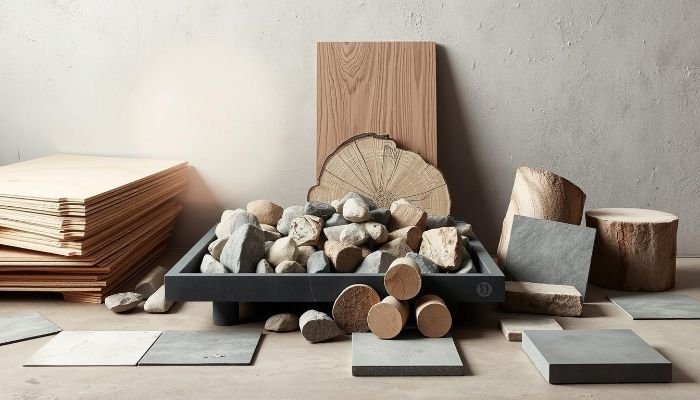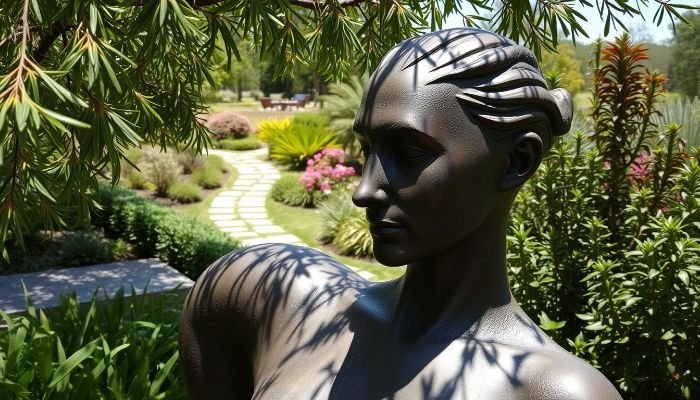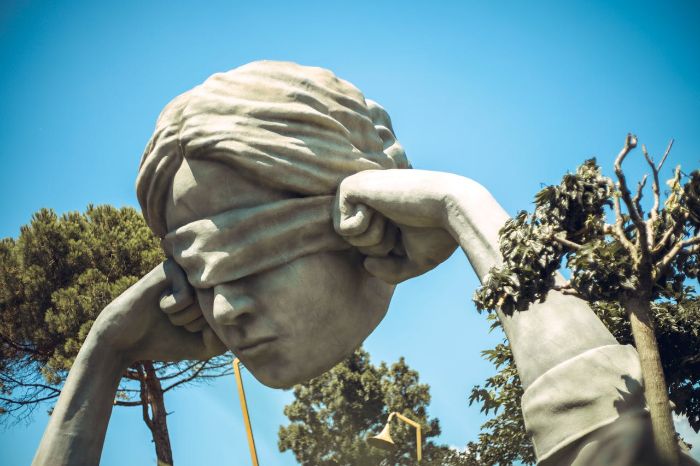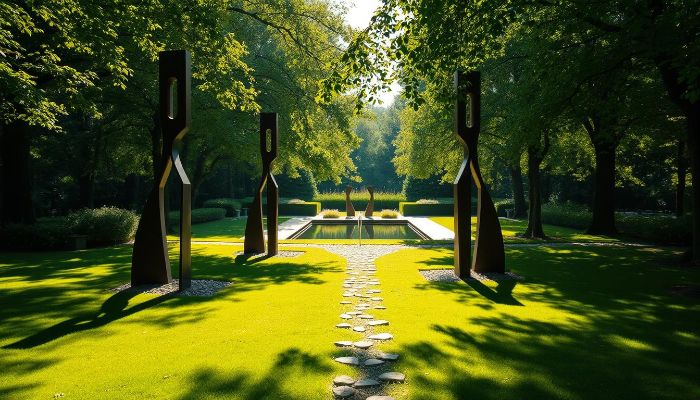The longevity and beauty of outdoor sculptures depend largely on the materials used. Some sculptures endure for decades, while others quickly deteriorate under the forces of nature. Selecting weather-resistant and structurally durable materials is critical for creating garden art that remains both striking and intact. This guide examines the best materials for outdoor use, helping you choose sculptures that will withstand environmental challenges for many years.
Key Takeaways
- Material choice directly impacts the durability and appearance of outdoor sculptures.
- Weather-resistant materials are essential for withstanding rain, sunlight, and temperature fluctuations.
- Strong, enduring materials preserve both the aesthetic value and structural integrity of sculptures.
- Local climate conditions should guide material selection for garden art.
- Maintenance requirements differ depending on the material, affecting long-term care.
- Some materials are inherently unsuitable for outdoor environments and should be avoided.
Table of Contents
Why Selecting the Right Material Is Critical for Outdoor Sculptures
Outdoor sculptures are continuously exposed to harsh environmental conditions, including ultraviolet radiation, precipitation, and temperature extremes. Selecting appropriate materials is essential to ensure that sculptures maintain their structural integrity and aesthetic appeal over time. Without durable materials, even the most skillfully crafted artwork can quickly deteriorate when subjected to natural elements.
How Weather, Moisture, and UV Exposure Damage Outdoor Sculptures
Outdoor sculptures face constant threats from rain, snow, sunlight, and fluctuating temperatures. Ultraviolet (UV) rays accelerate color fading and weaken material surfaces, while moisture infiltration promotes corrosion in metals and erosion in porous stones. Freeze-thaw cycles, particularly in colder climates, can cause cracks and structural instability. Selecting materials with inherent moisture resistance and UV durability is crucial to preserving both the form and appearance of outdoor artwork across diverse environments.
Consequences of Choosing Unsuitable Materials for Outdoor Sculptures
Selecting unsuitable materials for outdoor sculptures often results in structural and aesthetic deterioration. Inferior metals are prone to warping, corrosion, and surface deformation when exposed to moisture and temperature variations. Similarly, sculptures made from highly porous stone can suffer rapid erosion, leading to the loss of intricate details and weakening the overall form. Careful material evaluation is essential to minimize future repair costs and to preserve the sculpture’s artistic and structural value over time.
Best Weather-Resistant Materials for Durable Outdoor Sculptures
Selecting weather-resistant materials is fundamental to ensuring the longevity and resilience of outdoor sculptures. Among the most reliable options are natural stone and durable metal alloys, both valued for their structural strength and timeless aesthetic. These materials not only enhance the visual appeal of outdoor spaces but also offer proven resistance to environmental stressors over many years.
Stone Sculptures – Durability and Character from Granite, Marble, and Limestone
Stone remains one of the most enduring and visually impactful materials for outdoor sculptures. Granite is especially prized for its exceptional hardness and resistance to cracking, erosion, and freeze-thaw cycles, making it ideal for harsh climates. Marble brings refined elegance and smooth textures but requires regular sealing and gentle cleaning to preserve its appearance. Limestone, while softer and more porous, allows for intricate detailing and a warm, organic aesthetic.
Each type of stone has distinct maintenance needs, yet all offer strong weather resistance when properly cared for, combining natural beauty with structural reliability.
Bronze and Metal Alloys – Strength, Longevity, and Natural Patina
Bronze sculptures and architectural metal alloys are widely respected for their structural strength and exceptional durability in outdoor environments. Over time, bronze naturally develops a patina – a thin surface layer of oxidation, that not only enhances the sculpture’s visual depth but also acts as a protective shield against corrosion. This transformation is often considered part of the sculpture’s evolving character rather than a flaw, as confirmed by a 2024 study in Heritage Science analyzing patina composition and corrosion behavior in outdoor bronze artworks.
Thanks to their self-protective properties, bronze sculptures perform well in diverse climates, including those with high humidity or seasonal extremes. Their ability to withstand long-term exposure with minimal maintenance makes them particularly suitable for both residential landscapes and public art installations, where reliability and longevity are crucial.
Modern Materials That Combine Affordability and Outdoor Durability
Advancements in modern materials have expanded the possibilities for creating durable and visually appealing outdoor sculptures at lower cost. Resin and fiberglass are leading examples, offering high resistance to weathering while maintaining a lightweight structure. These materials can closely replicate the appearance of traditional stone or metal, making them a practical choice for budget-conscious projects without sacrificing durability.
Resin and Fiberglass – Lightweight, Durable, and Adaptable for Outdoor Use
Resin sculptures are valued for their ability to combine vibrant finishes with strong weather resistance, making them a reliable substitute for heavier, traditional materials. Fiberglass reinforcement enhances structural durability, especially in environments with frequent temperature shifts, moisture, or direct sunlight. Their lightweight composition allows for flexible placement and repositioning in garden layouts, while their resilience ensures long-term performance with minimal signs of wear from seasonal changes.
Concrete and Cast Stone – Versatile, Weather-Resistant, and Budget-Friendly
Concrete and cast stone are widely used in outdoor sculpture for their strength, versatility, and affordability. Concrete allows for detailed shaping, diverse surface finishes, and the replication of natural stone aesthetics at a fraction of the cost. Cast stone, a refined form of concrete, offers increased density and weather resistance, making it suitable for areas with extreme temperatures or heavy rainfall. Together, these materials support the creation of long-lasting sculptures that balance design flexibility with structural integrity.

Adapting Sculpture Materials to Local Climate Conditions
Climate plays a decisive role in determining which materials are suitable for outdoor sculptures. Temperature extremes, humidity, precipitation levels, and exposure to salt or wind all influence how well a material will perform over time. To ensure long-term durability and visual consistency, it’s important to align the material’s physical properties with the specific environmental stresses of the location.
Best Materials for Freeze-Thaw Durability in Cold Climates
In cold climates where freeze-thaw cycles are common, materials such as granite and dense, high-grade concrete perform exceptionally well. These materials have low porosity and high compressive strength, which reduces the risk of cracking caused by moisture expansion during freezing. Their inherent durability makes them especially reliable for outdoor sculptures exposed to snow, ice, and frequent temperature fluctuations.
Optimal Materials for Humid, Dry, and Coastal Environments
In humid regions, non-corrosive metals such as aluminum and stainless steel are preferred due to their resistance to oxidation and rust. These materials maintain their structural integrity despite constant exposure to moisture and fluctuating temperatures. In arid environments, fiberglass is a practical solution – it is lightweight, stable under prolonged sun exposure, and does not become brittle over time. Coastal areas present a unique challenge, requiring materials that can endure salt-laden air; bronze, stainless steel, and well-sealed stone are all suitable choices for resisting corrosion and preserving form in marine conditions.

Maintenance Guidelines for Different Outdoor Sculpture Materials
Long-term preservation of outdoor sculptures requires maintenance strategies tailored to the specific materials used. Each material, whether metal, stone, or resin, responds differently to environmental stress, and thus demands a distinct care routine. By understanding how to clean and protect each type properly, you can minimize deterioration, preserve visual quality, and extend the functional life of your outdoor artwork.
How to Clean Metal, Stone, and Resin Sculptures Safely and Effectively
Cleaning requirements vary by material, and improper methods can cause long-term damage. Bronze and aluminum sculptures benefit from occasional polishing using non-abrasive cloths and pH-neutral metal cleaners to remove oxidation without scratching the surface. Stone sculptures should be cleaned with mild soap and water using soft brushes, avoiding acidic agents that can erode the stone. Resin sculptures, which are non-porous and lightweight, require only gentle washing with a soft sponge and soapy water to maintain their finish and prevent buildup.
Sealing, Waxing, and Anchoring Techniques to Extend Sculpture Lifespan
Protective treatments can significantly enhance the durability of outdoor sculptures by shielding them from moisture, pollutants, and physical stress. Porous stones such as limestone and marble should be sealed at regular intervals to prevent water infiltration and surface deterioration. Metal sculptures, particularly bronze, benefit from periodic waxing, which creates a thin protective layer that guards against oxidation while preserving the finish. Large or tall sculptures should be securely anchored to stable bases to prevent movement or tipping caused by wind, rain, or shifting ground. Implementing these preventative measures reduces long-term maintenance needs and helps ensure structural stability over time.

Materials to Avoid for Outdoor Sculptures in Harsh Environments
Some materials are poorly suited for long-term outdoor use and tend to degrade quickly when exposed to harsh environmental elements. Factors such as moisture absorption, UV sensitivity, and lack of structural stability can cause premature wear, fading, or breakage. Understanding which materials are vulnerable in outdoor settings helps you avoid costly replacements and ensures your sculptures remain visually and structurally sound over time.
Why Painted and Varnished Wood Fails in Outdoor Sculptures
Wood adds organic warmth and texture to outdoor environments, but when treated with paint or varnish, its lifespan is significantly reduced. UV radiation and moisture quickly break down surface coatings, leading to fading, cracking, and eventual rot. Once the protective layer deteriorates, the underlying wood becomes vulnerable to fungal decay and structural weakening. As a result, painted or varnished wood is generally unsuitable for outdoor sculptures requiring long-term exposure.
Risks of Using Thin Plastics and Low-Grade Metals in Outdoor Sculptures
Low-quality materials such as thin plastics and inferior metal alloys often fail when exposed to outdoor conditions over extended periods. Plastics with inadequate UV resistance may warp, discolor, or become brittle, especially under intense sunlight or temperature fluctuations. Low-grade metals, particularly those lacking protective coatings, are vulnerable to rapid oxidation and corrosion, leading to aesthetic degradation and structural instability. Reliance on such materials typically results in short lifespans, higher maintenance needs, and increased long-term costs.
FAQ
Which materials last the longest in outdoor sculptures?
Granite, bronze, stainless steel, and high-quality concrete are the most durable materials for outdoor sculptures. They resist weathering, moisture damage, and UV degradation, making them suitable for long-term outdoor exposure with minimal maintenance.
What outdoor sculpture materials require the least maintenance?
Resin, fiberglass, and cast stone require the least maintenance compared to traditional materials. Their non-porous or sealed surfaces resist dirt and moisture, and most only need occasional washing to retain their appearance.
How do I choose sculpture materials based on local climate?
Match material properties to climate risks. Use freeze-resistant materials like granite or dense concrete in cold zones, corrosion-resistant metals in humid or coastal areas, and UV-stable materials like fiberglass in hot, arid regions.
Can outdoor sculptures survive winter weather?
Yes, but only if made from materials with low porosity and high structural strength, such as granite, bronze, or sealed concrete. These resist cracking and water infiltration during freeze-thaw cycles typical of winter climates.
Are modern synthetic materials a good choice for outdoor sculptures?
Yes, modern synthetics like resin and fiberglass offer excellent weather resistance, low weight, and design flexibility. They’re especially suitable for budget-conscious projects without compromising outdoor durability.
Which materials should be avoided for outdoor sculptures?
Avoid painted wood, untreated softwoods, low-grade metals, and thin plastics. These degrade quickly under UV radiation and moisture, often fading, rotting, or corroding within a few seasons.
How often should I maintain or seal outdoor sculptures?
Maintenance frequency depends on the material and environment. Stone sculptures may need sealing once per year, metals benefit from waxing every 6–12 months, and synthetic materials require only occasional cleaning.










